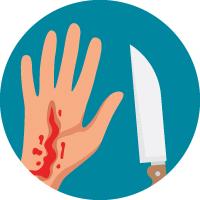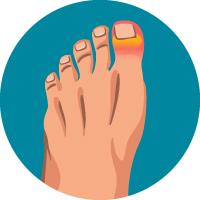WOUND EDUCATION GUIDE
WOUND CARE TERMINOLOGY Aerobic Bacteria Organisms that can survive and grow in the presence of molecular oxygen. Anaerobic Bacteria Organisms that do not tolerate free oxygen and may even die in its presence. They grow where there is a low oxidation-reduced potential or no air. Bacteria Single-celled microorganisms existing either as free-living organisms or as parasites.
Wound Education Guide – Wound Care Termonology
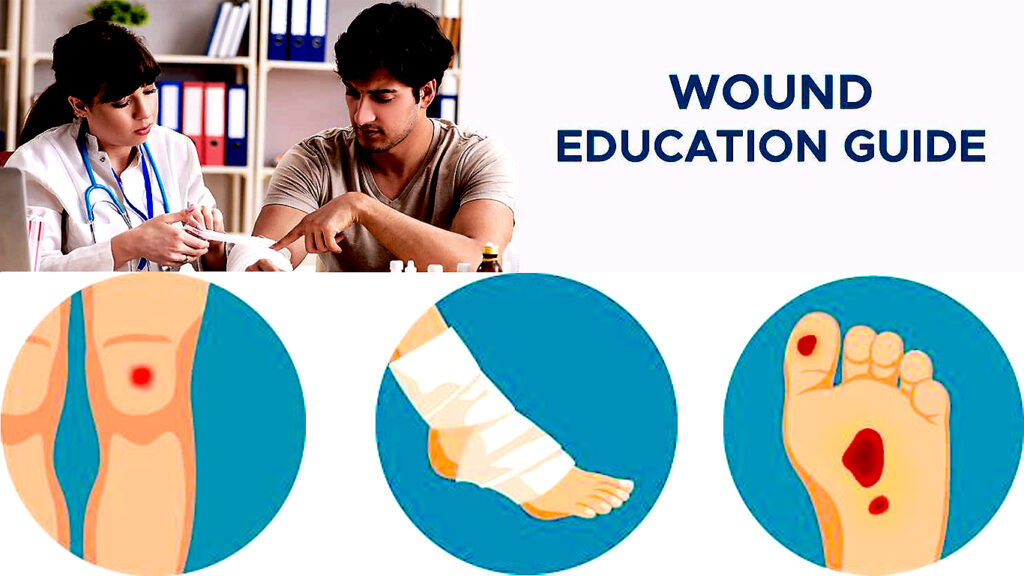
Table of Contents
WOUND CARE TERMINOLOGY – WOUND EDUCATION GUIDE
Aerobic Bacteria
Organisms that can survive and grow in the presence of molecular oxygen.
Anaerobic Bacteria
Organisms that do not tolerate free oxygen and may even die in its presence. They grow where there is a low oxidation-reduced potential or no air.
Bacteria
Single-celled microorganisms existing either as free-living organisms or as parasites.
Collagen
Chief structural protein generated by fibroblasts which forms the supportive network of connective tissue.
Connective Tissue
Found in the dermis below the first layer of skin and contains collagen and elastic fibres.
Epidermis
The first layer of the skin. It is composed of stratified squamous epithelium and contains four main cells, chief of which is the keratinocyte. These protect the skin and the underlying tissues.
Epithelium
The cellular covering of internal and external body surfaces. It lines the small cavities and blood vessels throughout the body.
Epithelialization
The process in which a wound is covered with epithelial tissues forming a barrier between the wound and the external environment.
Erythema
Red spots or patches on the skin. These may occur as a result of injury or irritation on the skin leading to dilation of the blood capillaries.
Fibroblast
The cells present in the connective tissue and responsible for production of collagen and other fibrous tissues.
Granulation Tissue
The tissue that grows from the base of a wound and fills it up during healing. It is comprised of new connective tissue and tiny blood vessels.
Growth Factor
It is a substance which stimulates cell growth. Could be a vitamin or a hormone.
Haemostasis
The process which promotes cessation of bleeding.
Immune System
Defines the body’s power to resist infection and other foreign substances.
Inflammation
Could be internal or external and refers to redness, pain and swelling as a reason of an infection, irritation or injury.
Infection
The invasion of a wound site or the body’s internal system by external microorganisms such as bacteria, virus or parasites.
Laceration
An irregular cut or tear in the skin or flesh.
Acute Wound
Wound in which healing progresses through its normal stages within the expected time frame. It is the result of carefully regulated steps involving a flow of processes based on the coordinated completion of several cellular activities.
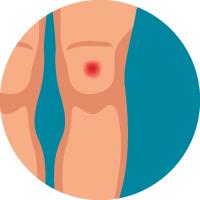
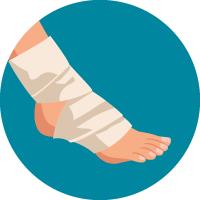
Chronic Wound
Wound in which healing is disrupted and delayed. Obstacles may include accumulation of necrotic or sloughy tissue on the wound bed. A chronic wound often becomes static in stages of either inflammation or proliferation.
Dermis
The second layer of the skin found below the epidermis and composed of connective tissue. The few cells in here include fibroblasts and macrophages. Its thickness varies depending on anatomical location. Blood capillaries, lymph vessels, hair follicles, nerve endings and sweat glands are found here.
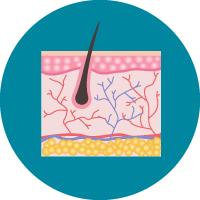
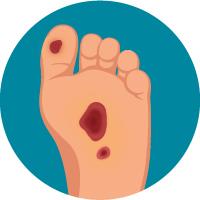
Diabetic Ulcers
Ulcers caused by the neuropathic and small blood vessel as a result of complications from diabetes. They typically occur over the plantar surface of the foot on load-bearing areas such as the ball of the foot.
Delayed Primary Closure
An anatomically precise wound closure that is delayed by a few days but sets in before the granulation tissue becomes visible. Usually instigated by the wound care expert to reduce infection risks.
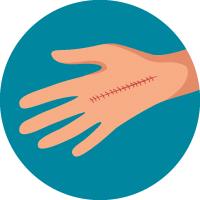
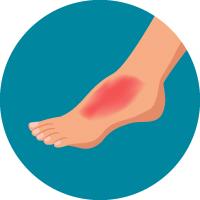
Neuroischaemic Diabetic Foot
The neuroischaemic diabetic foot is linked with peripheral neuropathy and is cool, pulseless with poor perfusion. The foot may appear deceptively pink or red and the skin is thin, shiny and hairless.
Pressure Ulcer
Localized injury to the skin and/or underlying tissue, usually over a bony prominence, as a result of pressure or pressure in combination with shear. Although friction and shear are not primary causes of pressure ulcers, they are important contributory factors.
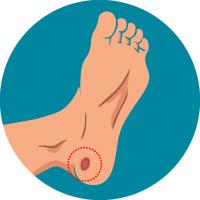
Pus
A thick, yellowish discharge oozing from a wound and which is an indication of infection in the body. The discharge is the result of accumulation of white blood cells, liquefied tissue and cellular debris.
Tetanus
An infectious disease as a result of bacterium clostridium tetani which may enter the body through an open wound, a cut or a puncture. It can be dangerous resulting in locking of the jaw.
